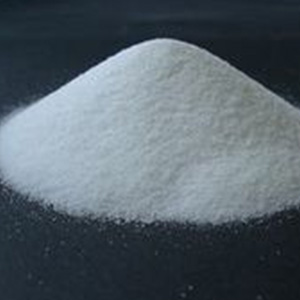
Na2SO4
DEFINITION
Content:
98.5 per cent to 101.0 per cent (dried substance).
CHARACTERS
Appearance: White or almost white powder, hygroscopic.
Solubility: Freely soluble in water.
IDENTIFICATION
A. It gives the reactions of sulphates.
B. It gives the reactions of sodium.
C. It complies with the test for loss on drying (see Tests).
TESTS
Solution S: Dissolve 2.2 g Sodium Sulfate in carbon dioxide-free water R prepared from distilled water and dilute to 100 ml with the same solvent.
Appearance of solution: Solution S is clear and colourless.
Acidity or alkalinity: To 10 ml of solution S add 0.1 ml of bromothymol blue solution R1. Not more than 0.5 ml of 0.01 M hydrochloric acid or 0.01 M sodium hydroxide is required to change the colour of the indicator.
Chlorides: Maximum 450 ppm.
Calcium: Maximum 450 ppm, if intended for use in the manufacture of parenteral dosage forms.
Iron: Maximum 90 ppm, if intended for use in the manufacture of parenteral dosage forms.
Magnesium: Maximum 200 ppm, if intended for use in the manufacture of parenteral dosage forms. To 10 ml of solution S add 1 ml of glycerol (85 per cent), 0.15 ml of titan yellow solution, 0.25 ml of ammonium oxalate solution and 5 ml of dilute sodium hydroxide solution and shake. Any pink colour in the test solution is not more intense than that in a standard prepared at the same time in the same manner using a mixture of 5 ml of magnesium standard solution (10 ppm Mg) and 5 ml of water.
Heavy metals: Maximum 45 ppm.
Loss on drying: Maximum 0.5 per cent, determined on 1.000 g by drying in an oven at 130C.
Characters: It occurs as a white or almost white powder, hygroscopic.
Identification:
(a)It gives the reactions of sulphates.
(b)It gives the reactions of sodium.
(c)It complies with the test for Loss on drying.
Solubility: Freely soluble in water.
Appearance of solution: Solution S is clear and colorless
Acidity or alkalinity: To 10ml of solution S add 0.1ml of bromothymol blue solution R1. Not more than 0.5ml of 0.01 M hydrochloric acid or 0.01 M sodium hydroxide is required to change the color of the indicator.
Chlorides: Maximum 450 ppm
Calcium: Maximum 450 ppm
Iron: Maximum 90 ppm
Magnesium: Maximum 200 ppm
Heavy metals: Maximum 45 ppm
Loss on drying:Maximum 0.5%
Assay: Not less than 98.5% and not more than 101.0% (dried substances).
Na2SO4·10H2O -- 322.20
Sulfuric acid disodium salt, decahydrate.
Disodium sulfate decahydrate [7727-73-3]
Anhydrous 142.04 [7757-82-6]
Sodium Sulfate contains ten molecules of water of hydration, or is anhydrous. It contains not less than 99.0 percent of Na2SO4, calculated on the dried basis.
Identification— A solution (1 in 20) responds to the tests for Sodium 191 and for Sulfate.
Acidity or alkalinity— To 10 mL of a solution, containing the equivalent of 1.0 g of Na2SO4·10H2O in 20 mL of water, add 1 drop of bromothymol blue TS: not more than 0.50 mL of either 0.010 N hydrochloric acid or 0.010 N sodium hydroxide is required to change the color of the solution.
Loss on drying— Dry at 105 for 4 hours: the decahydrate loses between 51.0% and 57.0% of its weight, and the anhydrous form loses not more than 0.5% of its weight.
Chloride— A portion equivalent to 1.0 g of Na2SO4·10H2O ( Sodium Sulfate Decahydrate )shows no more chloride than corresponds to 0.30 mL of 0.020 N hydrochloric acid (0.02%).
Na2SO4·10H2O -- 322.20
Sulfuric acid disodium salt, decahydrate.
Disodium sulfate decahydrate [7727-73-3].
Anhydrous 142.04 [7757-82-6].
Sodium Sulfate contains ten molecules of water of hydration, or is anhydrous. It contains not less than 99.0 percent of Na2SO4, calculated on the dried basis.
Packaging and storage— Preserve in tight containers, preferably at a temperature not exceeding 30.
Identification— A solution (1 in 20) responds to the tests for Sodium and for Sulfate.
Acidity or alkalinity— To 10 mL of a solution, containing the equivalent of 1.0 g of Na2SO4·10H2O in 20 mL of water, add 1 drop of bromothymol blue TS: not more than 0.50 mL of either 0.010 N hydrochloric acid or 0.010 N sodium hydroxide is required to change the color of the solution.
Loss on drying— Dry at 105 for 4 hours: the decahydrate loses between 51.0% and 57.0% of its weight, and the anhydrous form loses not more than 0.5% of its weight.
Chloride— A portion equivalent to 1.0 g of Na2SO4·10H2O shows no more chloride than corresponds to 0.30 mL of 0.020 N hydrochloric acid (0.02%).
Heavy metals—: the limit is 0.001%.
Na2SO4
Formula Wt 142.04
CAS Number 7757-82-6
REQUIREMENTS
Assay: 99.0% Na2SO4
pH of a 5% solution: 5.2-9.2 at 25C
MAXIMUM ALLOWABLE
Insoluble matter: 0.01%
Loss on ignition: 0.5%
Chloride (Cl): 0.001%
Nitrogen compounds (as N): 5 ppm
Phosphate (PO4): 0.001%
Heavy metals (as Pb): 5 ppm
Iron (Fe): 0.001%
Calcium (Ca): 0.01%
Magnesium (Mg): 0.005%
Potassium (K): 0.01%
Na2SO4-10H2O
Formula Wt 322.19
CAS Number 7727-73-3
REQUIREMENTS
Assay: 99.0% Na2SO4-10H2O
pH of a 5% solution: 5.2-9.2 at 25C
MAXIMUM ALLOWABLE
Insoluble matter: 0.01%
Chloride (Cl): 5 ppm
Nitrogen compounds (as N): 3 ppm
Phosphate (PO4): 5 ppm
Heavy metals (as Pb): 3 ppm
Iron (Fe): 5 ppm
Calcium (Ca): 0.005%
Magnesium (Mg): 0.003%
Potassium (K): 0.005%